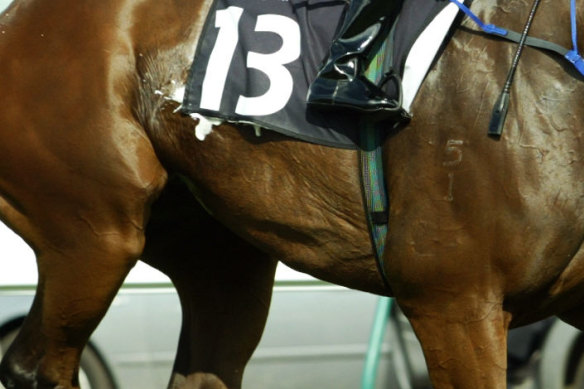- Analysis
- Politics
- Federal
- Interest rates
This was published 1 year ago
Unlucky 13th rate rise for home buyers as RBA punts on the economy
By Shane Wright
Talk about unlucky 13.
On a day when ordinary Australians gamble away millions based on the colours of a jockey’s silks or the length of a horse’s tail, the biggest losers from the Reserve Bank’s decision to take the official cash rate to 4.35 per cent will be the millions of people with a variable-rate mortgage.

This is new governor Michele Bullock’s first rate rise since taking the reins at the Reserve Bank in September, and the RBA’s 13th since May last year.Credit: Nicole Emanuel
On 13 occasions from May last year, the Reserve Bank board has lifted the cash rate. It has now been pushed up by 4.25 percentage points – the biggest increase in the shortest period in 40 years.
The last time the bank was so aggressive, the country ended up in the deepest recession since the 1930s. If you have a $600,000 mortgage, the monthly repayments will have climbed by more than $1500 – a casual $18,000 a year.
This is new governor Michele Bullock’s first rate rise since taking the reins at the Reserve Bank in September.
She, and the board, had in effect backed themselves into Tuesday’s decision by declaring the bank had a “low tolerance” for inflation to take longer to get back to the RBA’s target range than forecast.
But Bullock’s statement accompanying the decision, and two key forecasts in it, confirm it was a line-ball decision.
The bank had been forecasting inflation to be down to 3.3 per cent by the end of next year and at 2.8 per cent by the December quarter of 2025.
Bullock said inflation was now tipped to be around 3.5 per cent by the end of 2024 and then “at the top of the target range of 2 to 3 per cent” by Christmastime in 2025.
In other words, by its own forecasts, the RBA is trying to thread an inflation needle that would be imperceptible in a $2.5 trillion economy.
So this rate rise is about making it clear to consumers, businesses and governments that the bank and its new governor are not going to let expectations about possible inflation pressures drift. A line has been drawn.
The other number of importance in Bullock’s statement was about unemployment.
The bank had been expecting its rate rises to slow the economy enough that the jobless rate – currently 3.6 per cent – would gradually lift to 4.5 per cent over the next 18 months.
It now believes unemployment will increase to 4.25 per cent. That quarter of a percentage point equates to almost 30,000 extra people holding down a job.
That suggests the RBA has rethought how tight the jobs market can be while inflation comes back to its target band. It also points to the bank believing it can inch up interest rates without causing too much more financial pain.
While Bullock’s statement leaves open the door to future rate rises, the language has been tempered. Now, another rate rise will be “whether” upcoming data on the economy such as inflation is in line with expectations. Last month, “some further tightening” of rates may have been required.
That’s why some economists are already saying the Reserve Bank may have cracked the interest rate whip for the last time, predicting the next move will be a cut in the second half of next year.
Like other central banks around the world, the Reserve is like a horse running in a different direction on a foreign track. This is unfamiliar territory.
Interest rates have been pushed up at an extraordinary rate on people carrying some of the biggest mortgages in the world. No one can say definitively that this is going to work out perfectly.
Sometime soon, the cumulative impact of 13 rate rises will bite – and bite hard. At that point, the Reserve Bank will need a little luck to go its way.
Cut through the noise of federal politics with news, views and expert analysis. Subscribers can sign up to our weekly Inside Politics newsletter.